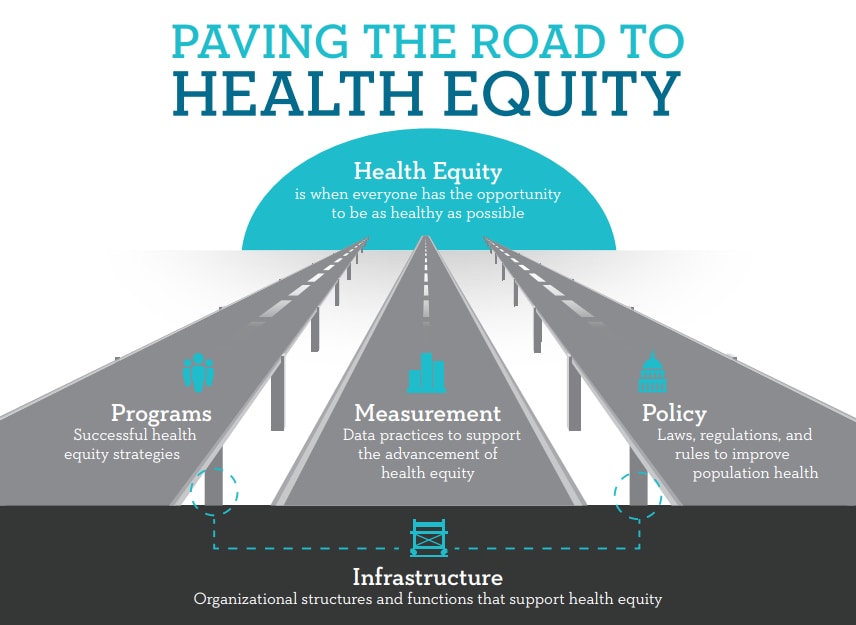At a glance
As defined by the U.S. Department of Health and Human Services, health equity is the attainment of the highest level of health for all people. Research shows population-level factors, such as the physical, built, social, and policy environments, can have a greater impact on health outcomes than individual-level factors.
CDC Publications on Health Equity Practice
In collaboration with the Association of State and Territorial Health Officials, CDC published a special supplement to the Journal of Public Health Management & Practice focusing on health equity titled, Strengthening the Science and Practice of Health Equity in Public Health.
Public Health Reports
This supplement to Public Health Reports, organized by the Centers for Disease Control and Prevention's (CDC's) Office of Health Equity, provides accessible, useful information from the front lines of public health to inform health equity practice.
Health Equity Framework

Road to Health Equity Explained
Programs
- Health equity can be characterized as action to ensure all population groups living within an area have access to the resources that promote and protect health. This article describes examples of public health programs that include elements that enhance health equity.
Measurement
- Reduction of health disparities and advancement of health equity in the United States require high-quality data as well as proper tools to facilitate accurate interpretation of these data. This article proposes a set of recommended practices in measurement of health disparities, health inequities, and social determinants of health at the national level to support the advancement of health equity.
Policy
- Public health policy approaches have demonstrated measurable improvements in population health. Yet, "one-size-fits-all" approaches do not necessarily impact all populations equally and, in some cases, can widen existing disparities. The intent of this article is to describe how some current policies and policy areas that have a health equity orientation are being used with the aim of reducing health disparities.
Infrastructure
- The public health infrastructure required for achieving health equity is complex. It should be responsive to current and emerging priorities and capable of providing the foundation for developing, planning, implementing, and evaluating health initiatives. This article examines how these infrastructure requirements are operationalized to promote health equity at CDC.
